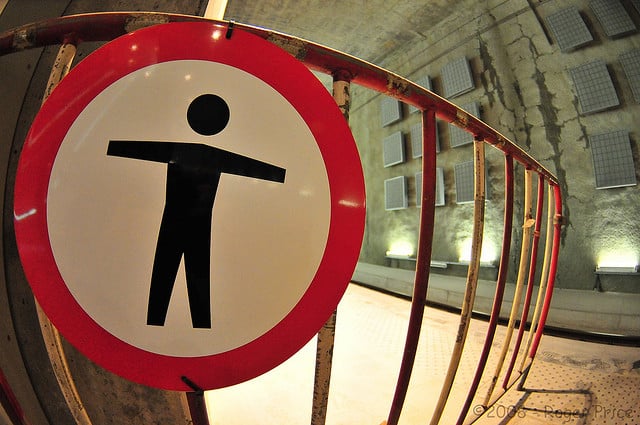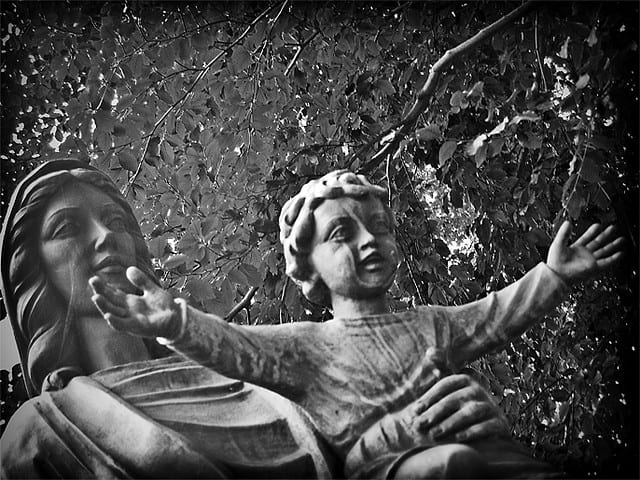The first time a friend came out to me I was shopping for a Campbell’s Soup Can costume at a Target in St. Louis. As I searched for a means to disguise myself as comfort food he chose to reveal part of his true self to me. It might have been the environment or the context we were in, but I wasn’t alarmed by his revelation. Quite the contrary. It was an invitation to experience and understand my friend in a deeper way. Sometimes, we might need to keep ourselves hidden, but other times, the costumes must come off.
Growing up in Green Bay, I had a pretty homogenous worldview. For the majority of my youth I thought that every black man that I saw played for the Packers. It wasn’t until an embarrassing encounter in a Foot Locker (another story altogether!) that I learned otherwise. Admittedly, I had much to discover about diversity, difference, and privilege. My college years at Saint Louis University were filled with nights of deep discussion about race and sexuality, grounded in mutual respect, honest dialogue, and a spirit of reconciliation. It’s a classic tale, really–guy goes to college, gets rocked by the vastness of the human experience, and strives to go further still in how he engages the world.
While I had many gay friends at SLU, it was still a relatively closeted community. When I began working and studying at UW-Madison many of the students I encountered identified openly as Queer. Condoms were passed out ad nauseum by people wearing gigantic condom hats and there was a student organization called “Sex Out Loud.” Needless to say, it was much different than my preceding 17 years of Catholic education. My understanding of the students’ unique and often challenging circumstances with family and friends, their network at the University, and their efforts to educate others about Queer issues grew tremendously. I became an active supporter of LGBTQ student groups and programs, an ally, if you will. I quickly learned that being an ally comes with its own risks and challenges.
During Lent my first year in Madison there was a PR program through the LGBT Campus Center. The catch phrase for the campaign was “Gay? Fine by me.” I wore my bright blue t-shirt often and pinned a small yellow button bearing the slogan on my backpack. I believed in what they said. Since it was Lent I was attending daily Masses. One day I visited the chapel around noon and set my backpack down beside me in the pew. When the time came for the sign of peace an older professor type (a daily Mass regular) offered his hand. He pulled me close and said quietly, “You should be ashamed to wear that pin in here.” These words deflated me.
I abandoned daily Mass for the remainder of Lent because I was unwilling to remove the pin from my bag and also unwilling to face the shame I felt because of his comment. I looked at the world around me–Madison, the liberal capital of Wisconsin–and felt guilty for the comfort I experienced in that environment as a Catholic man. I deeply wanted to be supportive of the Queer community, but because of that one comment it seemed that my own faith community couldn’t affirm me in that desire. It was a hard time for me to be Catholic.
***
But my faith persists. I’ve since entered the Society of Jesus, and as a Jesuit scholastic I’m grateful to have heard other voices in the community of faith. I’m happy to seek out places of encounter, of welcome, and of dialogue. I’m back on campus at another Jesuit university for my philosophy studies. Recently there have been panels on Queer Theology, free showings of “Dallas Buyers Club,” and programs discussing LGBT issues and Ignatian spirituality. I regularly hear “Same Love” blaring in the gym. There are many people working to make this a place of welcome and understanding. There are still many tough questions to be asked and answered.
When I look to the history of my church I realize that we have a community of believers whose arms have been opened wider and wider by the movement of the Holy Spirit. These open arms are not new; indeed, the love Christ witnessed is this ‘same love’ we witness moving in our lives today; it’s a love of radical inclusion. We have a Pope who says in action and deed that our voices of judgement and exclusion have been given a pulpit for far too long. He speaks instead in a voice of mercy and forgiveness about a culture of compassion and encounter.
Every time I walk into our chapel on campus the image I’m met with is one of a God whose arms are spread wide, a God crucified for love. This God tells me that no one is turned away, not because of a pin on their backpack, who they hold hands with, or how they reconcile their own lives with a world that can at times bear hatred and discord. In that image lies a model for Christian love and my own hope. In this church I pray for the willingness to wrap my own arms around even those who withdraw in fear from the work being done and the hard work yet to do all in the name of love.
***
The cover image, from Flickr user Roger Price, can be found here.



